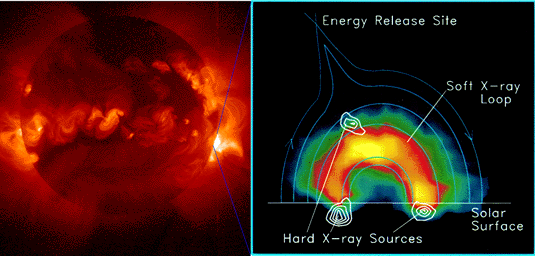


Solar flares are the largest and most powerful explosions in the solar system. The emissions from solar flares and CMEs and the particles and shock waves that often accompany them can profoundly affect the space environment around the Earth, are dangerous to astronauts and to spacecraft, and can cause significant effects in the Earth's atmosphere and at the surface. Scientists have learned much about solar flares from space- and ground-based observations over the years, but two basic questions remain unanswered.
HESI will lead to improved understanding and more reliable predictive capabilities of intense flares and their most dangerous consequences. HESI will also provide unique information on the fundamental processes of explosive particle acceleration and plasma heating that occur at many sites throughout the universe, including in pulsars, quasars, and around black holes.
The best time to study solar flares is at a peak of the 11-year cycle of solar activity, next expected in the year 2000. HESI should be in orbit by then to catch the most flares during its 1-to-3-year lifetime.

The name has been altered to the High Energy Solar Spectroscopic Imager. For more information on HESSI, please see the HESSI home page.

Click here for a larger, JPEG representation of the figure at the top of the page.

Solar Connections: A Science Initiative for NASA Space Physics
Last Modified: